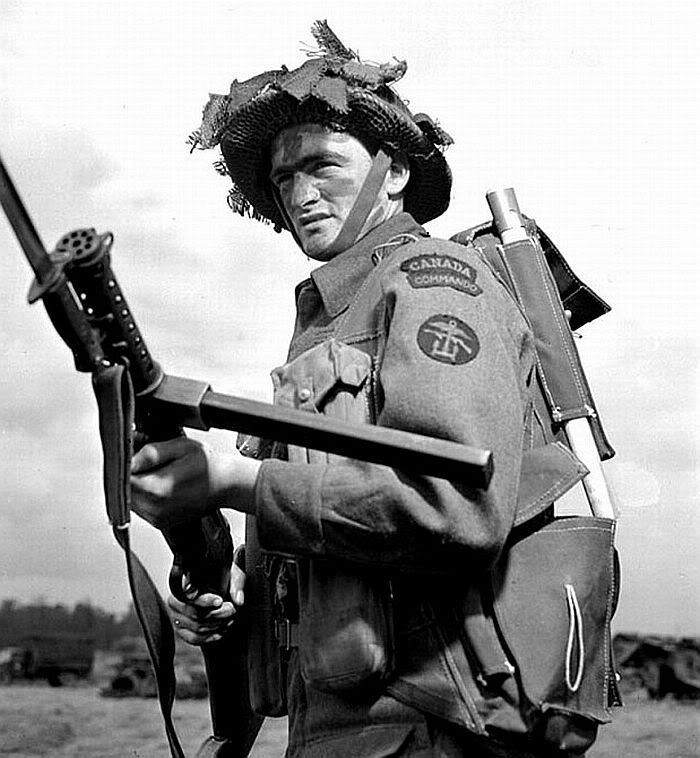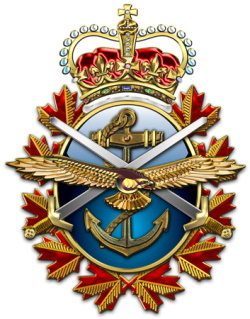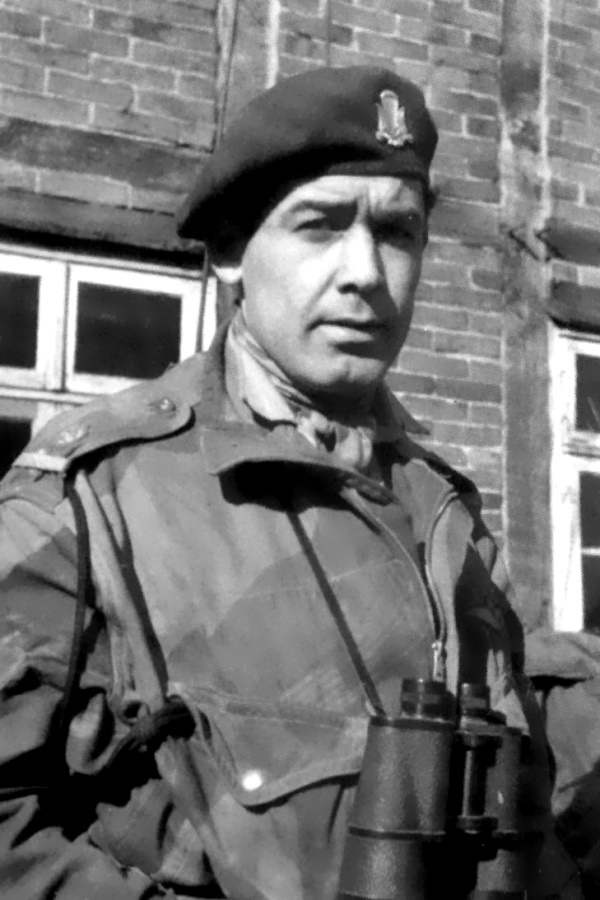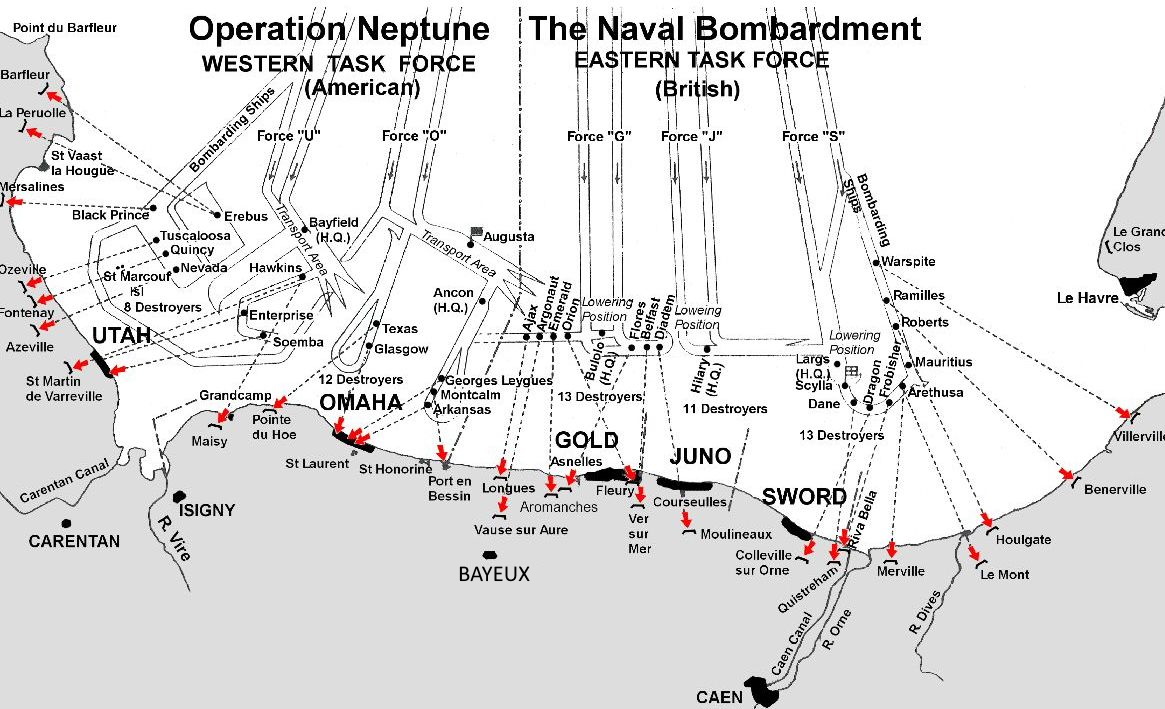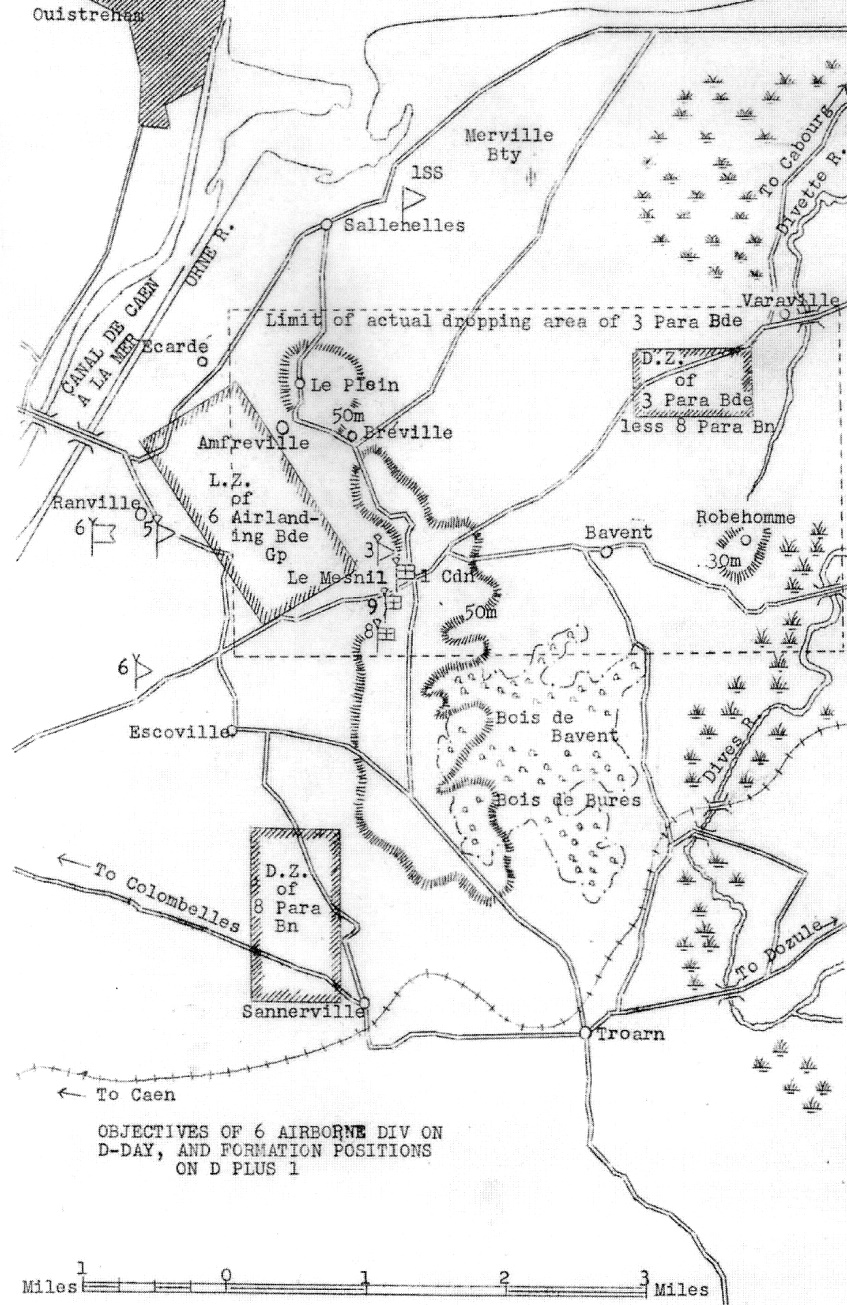Document Source: Royal Canadian Army, Historical Section, Canadian Military Headquarters. This archive is an Amendment to Report #139.
(1) The following amendment, dealing with the casualties suffered by the 1st Canadian Parachute Battalion on June 6, 1944, should be read in conjunction with paragraph #40 of this report. (2) This breakdown of casualty figures has been compiled by the Officer in charge of the War Diaries, the Historical Section of the Canadian Military Headquarters (CMHQ), from information contained on the ‘battle casualty statistic cards’ maintained by the Casualty Section, Overseas Canadian Records Office. (3) Casualties for June 6, 1944, were as follows, presumed Killed 2; Killed 18; Missing 91; Wounded 6. This figure ‘Missing’ 91, includes 10 listed as ‘now safe’ and 81 listed as ‘Prisoner of War repatriated now.
The 1st Canadian Parachute Battalion in France
June 6, 1944 – September 4, 1944.
(1) This report is the story in the outline of the participation of the 1st Canadian Parachute Battalion in the Allied Invasion of France. The period covered is from D-Day, June 6, 1944, to the unit’s return to England on September 6, 1944. The formation of the unit and the problems arising out of its early training in the USA, Canada, and the UK, will be briefly discussed in another report soon to be published on the EUCMH’s website.
(2) After its arrival in the UK on July 28, 1943, under the command of Col G.F.P. Bradbrook, the Battalion had 10 months of extensive training in preparation for the airborne phase of the Allied assault. During this period of training, and subsequent action in France, the unit formed part of the British 3rd Parachute Brigade of the 6th Airborne Division. The latter formation was included in Gen Bernard Montgomery’s 21st Army Group including the British and the Canadian components of the Allied forces that invaded France. The following brief account will inevitably make frequent reference to the activities of the British formations under whose command the 1st Canadian Parachute Battalion served, in order that the relationship of the unit to the operation as a whole may be clearly established.
(3) Material for this report has been drawn from the Unit War Diary, substantially supplemented by the War Diary of the British 3rd Parachute Brigade, and from sitreps and statements of officers who participated in the airborne assault.
(4) The general plan of the Allied invasion of France in Operation Overlord is described in the report ‘Canadian Participation in the Operations on northwest Europe 1944’, Part 1, The Assault and Subsequent Operations of the 3rd Canadian Infantry Division and the 2nd Canadian Armored Brigade. In a very condensed form, the initial Joint Plan visualized a night attack by Bombers, in very great strength, followed by a large-scale attack by airborne troops. The latter would be preceded and prepare for the main Seaborne invasion, which would take place under the cover of further air support and tremendous naval bombardment. The general area of the attack was that portion of the northeastern coast of Normandy in the vicinity of Carentan, Bayeux, and Caen.
Formation and Unit Objectives
(5) The airborne attack comprised two major operations. In the western sector, on the right of the Allied landing, near the beaches in front of Carentan and Vareville, two American Airborne Divisions, the 82nd Airborne Division, and the 101st Airborne Division, were to make a descent in preparation for the seaborne landings in that area. In the eastern sector, allocated to British and Canadian forces, the 6th Airborne Division, forming part of the 1st Corps of the 2nd British Army, was given the important task of protecting the left flank of 3 British Infantry Divisions, which was to land on the beach west of Ouistreham and to capture Caen by H+22. The 6th Airborne Division was to deny the enemy use of the area between the Orne River and the Dives River north of the road Troarn Sannerville Colombelles and to hold this bridgehead until the seaborne reinforcements arrived. During the period of planning, the code name ‘Neptune’ was given to the seaborne assault phase of the projected operations in the British sector.
(6) Formations in the 6th Airborne Division (Gen R. N. Gale), were the 3rd Parachute Brigade Group (including the 1st Canadian Paratrooper Battalion), the 5th Parachute Brigade Group, the 6th Air Landing Brigade Group and then 1st Air Landing Recce Regiment. Brought under command of Operation Neptune was the 1st Special Service Brigade. Each of these five forces was assigned important tasks within the divisional area. The 5th Parachute Brigade (7, 12, and 13th Parachute Battalions), in the role of securing a link with 3 British Infantry Divisions were ordered to seize and hold the 2 bridges, over the Caen Canal in Colombelles and Benouville as well as the Orne River in the vicinity of Benouville, then establish a bridgehead in the Ranville area.
Immediately to the south, the 6th Air Landing Brigade Group (R.U.R and Oxf Bucks) was to come down on a landing zone west of Amfreville and to secure a firm base area between Escoville and the Orne River. Making a glider landing east of Ranville late on D-Day, the Air Landing Recce Regiment was to strike southwards beyond the divisional boundary, with the intention of establishing a base at Cagny from which further offensive operations east and southeast could be carried out. To the north the Commandos of the seaborne 1st Special Service Brigade (3, 4, 6th Commandos, and the 45th (RM) Command), landing on the Ouistreham beaches, were assigned the task of mopping up the coastal area between the Orne River and the Dives River as far south as Le Plein-Varaville. The job of preventing the entry into the area of enemy reinforcements from the east by demolishing 6 bridges across the Dives River and one of its tributaries, the Divette River, and by denying the use of all main roads within the divisional area, was given to the 3rd Parachute Brigade (Gen Stanley J. Hill). In addition, the brigade was made responsible for silencing an enemy coast defense battery at Merville.
(7) Division of the objectives of the 3rd Parachute Brigade between its component units saw the 9th Parachute Battalion being given the road-denial tasks in the north (including the destruction of the Merville Battery), the 8th Parachute Battalion receiving the bridge blowing assignments in the southeast part of the area, and the 1st Canadian Parachute Battalion (Col Bradbrooke) being assigned the operations in the eastern and central sector, in Robehomme – Varaville – Le Mesnil triangle. The specific tasks of the Canadian unit as enumerated in the 3rd Parachute Brigade Operation Order were as follows (a) Secure and protect the Drop Zone during the landing of the Brigade Group by the destruction of the enemy HQs area at Varaville and neutralization of enemy occupying houses in the area; (b) Destroy the bridge at Varaville by H+2 and cover the demolitions until relieved by the 1st Special Service Brigade. Not before H+5; (c) Destroy the bridges at Robehomme by and at (199739) H+2 and cover the demolitions. (Note that on the 1:25.000 map, there is no indication of the area of the existence of any bridge or need for one at (199739). Nor does the account of the operation in the 1st Canadian Parachute Battalion’s War Diary make any reference to the destruction of such a bridge. It may be assumed that this was one of a number of small bridges over ditches within the B Co’s area); (d) Cover the move to an assault on the Merville Battery by the 9th Parachute Battalion from interference from the south; (e) Seize and hold the area around the road junction at (141728). This road junction topped the narrow Le Plein-Bois de Bavent Ridge, a strategic feature, 180 feet high, dividing the Orne River and Dives River valleys. Possession of this thickly wooded ridge would protect the Benouville bridges, and prevent enemy observation of the Ranville bridgehead. (WD 1st Cdn Para Bn, June 1944, ‘Appreciation of Situation by Brig Hill, April 14, 1944’). Because of these factors, the vicinity of the crossroads was selected as the site of the 3rd Parachute Brigade Command Post, with HQs of the 3 battalions grouped around it.
Of the above tasks for the 1st Canadian Para Bn, (a) (b) was assigned to Charlie Co, (c) and (d) to Baker Co, and (f) to Able Co. (Historical Section File AEF/1 Cdn Para Bn/C/I/, Folio N°III (c): 1 Cdn Para Bn O.O. N°1, May 28, 1944).
The Assault (June 6 1944)
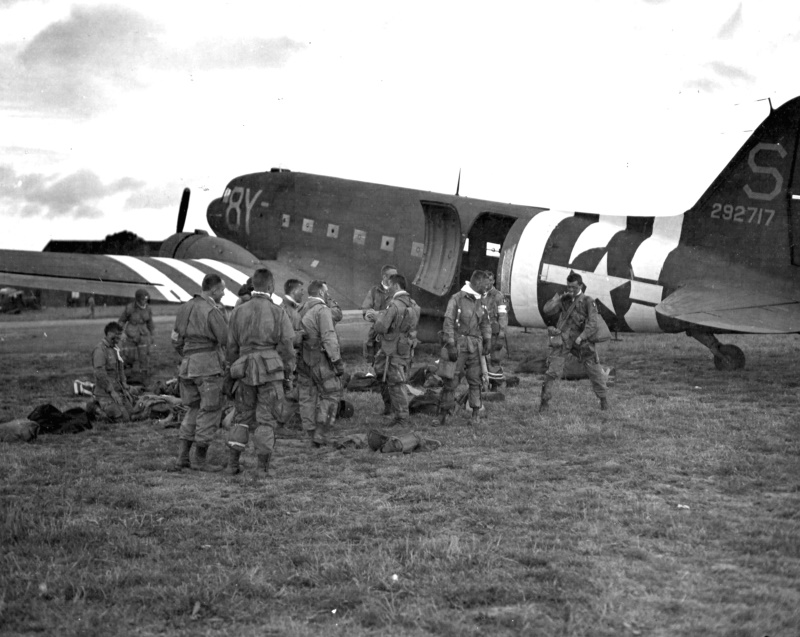
 (8) After a postponement of 24 hours because of unfavorable weather, the Allied invasion of France began in the early hours of June 6, 1944. The 1st Canadian Parachute Battalion had enplaned late on June 5, in two sections. Charlie Co, moving with the Advanced Brigade HQS to neutralize opposition on the DZ took off in 12 Armstrong Whitworth Albemarle airplanes from the Harwell Airfield between Oxford and Reading at 2230. The remainder of the battalion left from Down Ampney, between Swindon and Cirencester, at 2325, traveling in 38 C-47 Douglas Skytrains, 3 of which towed gliders, carrying jeeps and trailers loaded with ammunition and signals equipment.
(8) After a postponement of 24 hours because of unfavorable weather, the Allied invasion of France began in the early hours of June 6, 1944. The 1st Canadian Parachute Battalion had enplaned late on June 5, in two sections. Charlie Co, moving with the Advanced Brigade HQS to neutralize opposition on the DZ took off in 12 Armstrong Whitworth Albemarle airplanes from the Harwell Airfield between Oxford and Reading at 2230. The remainder of the battalion left from Down Ampney, between Swindon and Cirencester, at 2325, traveling in 38 C-47 Douglas Skytrains, 3 of which towed gliders, carrying jeeps and trailers loaded with ammunition and signals equipment.
Each paratrooper carried normal equipment, including a fighting knife, a toggle rope, an escape kit with French currency, and 2 24-hour rations. In all, a man’s load amounted to approximately 70 pounds (35 Kg). A special duty party from the 1st Canadian Parachute Training Company attended the battalion to the concentration area and relieved it of various administrative tasks during the final stages of preparation for the assault.
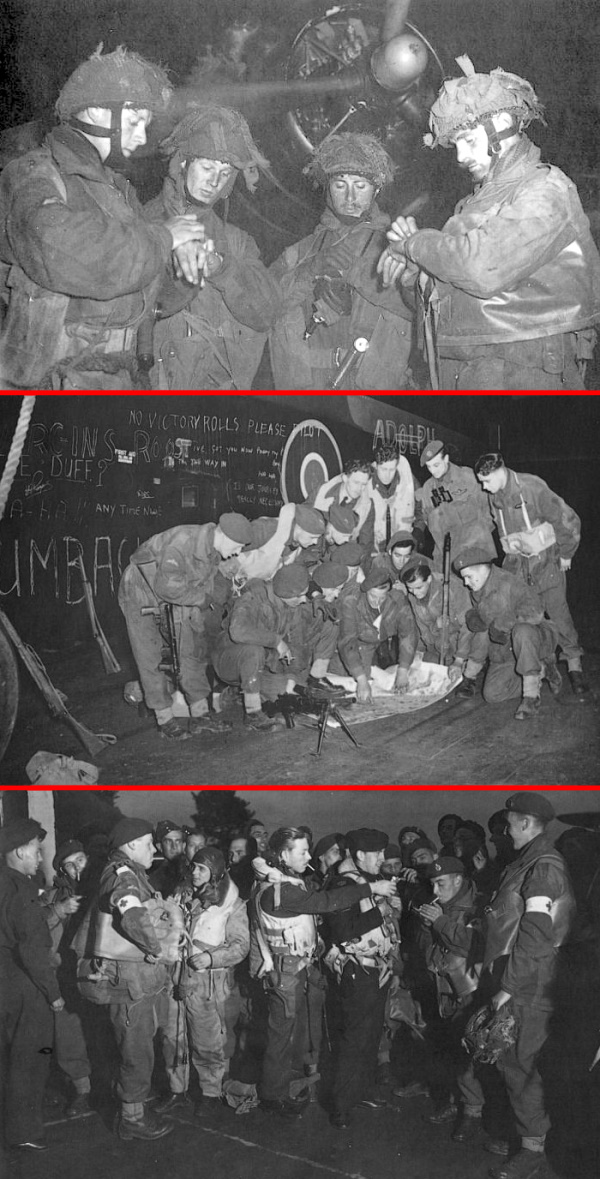 (9)The Canadian descent from the sky upon the fields and woods on Normandy was made between 0100 and 0130 on D-Day. Comparatively few of the men hit the designed DZ. Although flying conditions were good, and landmarks clearly visible, the dispersion was very bad, and the actual dropping zone extended over a general area ten times the size of that originally projected. This apparently faulty air navigation might have had far more unfortunate results than actually ensued. Its result was seen in the large number of paratroopers captured from the battalion on the first day. Two platoons of Baker Co dropped west of Robehomme, 2 miles from their prescribed DZ. One stick of 10 men from Charlie Co dropped west of the Orne River, below Ouistreham, more than 4 miles from its intended target.
(9)The Canadian descent from the sky upon the fields and woods on Normandy was made between 0100 and 0130 on D-Day. Comparatively few of the men hit the designed DZ. Although flying conditions were good, and landmarks clearly visible, the dispersion was very bad, and the actual dropping zone extended over a general area ten times the size of that originally projected. This apparently faulty air navigation might have had far more unfortunate results than actually ensued. Its result was seen in the large number of paratroopers captured from the battalion on the first day. Two platoons of Baker Co dropped west of Robehomme, 2 miles from their prescribed DZ. One stick of 10 men from Charlie Co dropped west of the Orne River, below Ouistreham, more than 4 miles from its intended target.
These paratroopers were fortunate in making their way to rejoin the battalion on the following day. That so many did return safely to their unit speaks well for their individual initiative and the thoroughness of the briefing given to all ranks prior to departure from England. Among the Vickers and Mortar Platoons, there was an unexpectedly heavy waste of weapons. Machine guns and mortars were carried in special kit bags, many of which tore loose during the jump and were lost (WD, 1 Cdn Para Bn, June 6, 1944).
(10 In spite of its initial dispersion, the battalion achieved surprise, and all objectives were speedily attained. Charlie Co, having secured the DZ, demolished the bridge across the Divette River at Varaville and engaged a German strongpoint just west of the town. This position, which had to be cleared to secure the DZ, proved much more strongly held than had been expected.
 By 1030, the enemy pillbox had surrendered, but not before a large number of Canadian casualties had been sustained. Its capitulation was largely brought about by the effect of our PIAT (Projectile Infantry Anti Tank) bombs, according to the evidence of a Canadian mortar detachment commander, who had landed on the top of the enemy position and temporarily been held, prisoner. The reduction of this post and the destruction of the Merville Battery by the 9th Parachute Battalion removed the two strongest local enemy threats to the security of the brigade area. At 1500, bicycle troops of the 6th Commando arrived and Charlie Co proceeded to the battalion area at Le Mesnil. Meanwhile, the other companies had little difficulty in achieving their objectives. Able Co, having covered the flank of the 9th Parachute Battalion in its successful assault on the bomb-shattered bunker of the Merville Battery (86 Halifax and 13 Lancasters of 6 Groups of the Royal Canadian Air Force, formed the major part of a force that dropped a full bomb load on the target prior the assault) and it’s subsequent withdrawal to Le Plein, rejoined its battalion at the Le Mesnil-Bavent crossroads at 1530.
By 1030, the enemy pillbox had surrendered, but not before a large number of Canadian casualties had been sustained. Its capitulation was largely brought about by the effect of our PIAT (Projectile Infantry Anti Tank) bombs, according to the evidence of a Canadian mortar detachment commander, who had landed on the top of the enemy position and temporarily been held, prisoner. The reduction of this post and the destruction of the Merville Battery by the 9th Parachute Battalion removed the two strongest local enemy threats to the security of the brigade area. At 1500, bicycle troops of the 6th Commando arrived and Charlie Co proceeded to the battalion area at Le Mesnil. Meanwhile, the other companies had little difficulty in achieving their objectives. Able Co, having covered the flank of the 9th Parachute Battalion in its successful assault on the bomb-shattered bunker of the Merville Battery (86 Halifax and 13 Lancasters of 6 Groups of the Royal Canadian Air Force, formed the major part of a force that dropped a full bomb load on the target prior the assault) and it’s subsequent withdrawal to Le Plein, rejoined its battalion at the Le Mesnil-Bavent crossroads at 1530.







